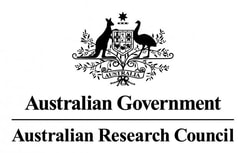Research
|
Article: The impact of COVID-19 on the well-being of Australian Visual artists and arts workers
In this paper, we assess the impact of the COVID-19 pandemic on the Australian visual arts sector. We base our analysis on the responses of over 1500 visual artists and arts workers to a survey conducted by the National Association for the Visual Arts (NAVA) in September 2021. NAVA employed this online survey to study the relationship between the pandemic and both the incomes and mental health of artists and arts workers. Using regression analysis, we find that there has been a significant impact for both artists and arts workers, with the severity of the impacts varying by gender, age and the availability of state-based and Australian Government support programmes. |
Survey analysis: Arts workers: insights into insecure work and career patterns
This paper is the second in a series of reports on a survey undertaken as part of a large-scale research project exploring the incomes, and working conditions of visual and craft artists, and arts workers in Australia. Conducted in 2022, the survey sought information on sources of income and modes of work and employment over two separate financial years: 2018-2019 and 2020-2021. In this paper, we examine the results of respondents who identified primarily as arts workers. |
|
Article: Under-counting, a gendered industry, and precarious work: the challenges facing Creative Australia in supporting visual artists
This article highlights key findings from our survey in relation to the formation of Creative Australia as part of the new federal Cultural Policy, Revive. It points out the inconsistencies in identifying visual and craft artists in current sources, the gender imbalance within this population, and the multifaceted ways artists make an income in Australia. |
Survey analysis: Insights into the hybrid and diverse incomes and career patterns of visual and craft artists
This paper reports on the results of a survey conducted as part of a large-scale research project exploring the incomes, and working conditions of visual and craft artists, and arts workers in Australia. The survey was conducted in 2022 and sought information about the working practices and incomes of respondents and the extent to which this had changed over the preceding two years. We present the initial results from this survey with a focus specifically on respondents who identified primarily as visual or craft artists. |
|
Article: The Incomes of Visual Artists: Which Artists, What Income?
We review a body of literature that addresses the incomes of visual artists and their participation in the labour market. It is clear that the level and composition of visual artists’ incomes varies widely, as does their engagement in different forms of employment. The lack of a consistent definition of an artist and a lack of consistency in income sources included in current data collection presents challenges for researchers. The focus of our research is on the economic status of visual artists in Australia, and we identify a number of considerations that might inform policy responses to their financial position. |
Discussion paper: Making Sense of Incomes in the Australian Visual Arts and Craft Sector
The purpose of this paper is to review existing datasets that relate to the incomes of visual artists, craft practitioners, and arts workers in the visual arts and craft sector, and identify important gaps in our knowledge of the work practices in the sector. Our focus is on Australian studies over the past two decades, and we seek to identify consistent themes reported within this research. It sets the scene for our comprehensive survey of incomes in the visual arts and craft sector which launched in the first part of 2022. It is readily apparent from existing surveys that the definition of visual artists and craft practitioners has a significant impact on the data that is collected and the nature of arts practices that are studied and portrayed in research findings. In our survey, and in the broader research project, we leave it to respondents to self-identify as visual artists, craft practitioners and arts workers, and thereby capture the broadest possible range of practices and careers. |
|


